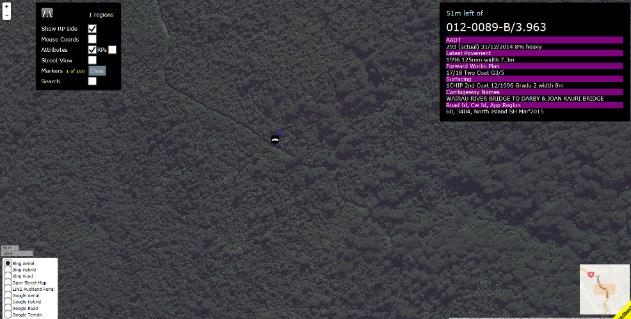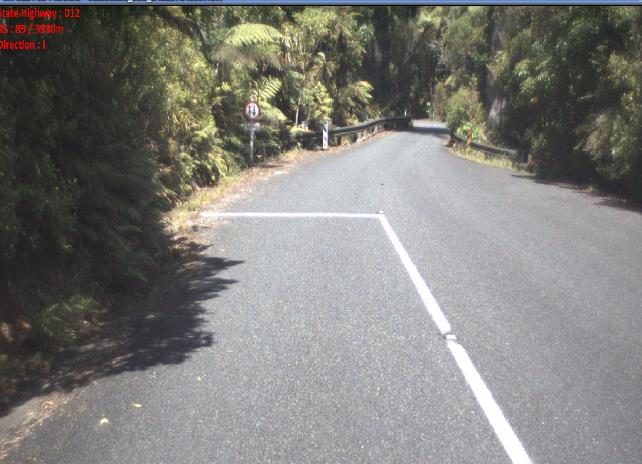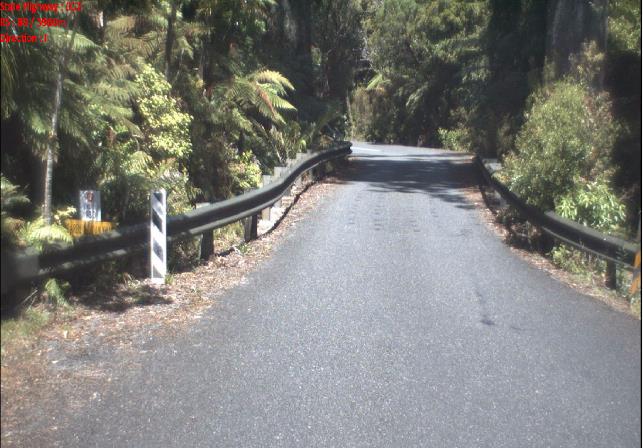
Extract from Options Report – Northland One Lane Bridges
Replacement, May 2015 – pages 37-40
9 Darby and Joan Kauri Bridge, SH12
9.1 Background
This bridge is situated in the heart of the Waipoua Forest. Unlike other bridges, this was constructed
not to span a valley or watercourse but to span over the root system of two adjacent ancient Kauri
trees in 1966. The structure is more a series of piles with a ring beam and a deck built off that, rather
than a
traditional bridge. The bridge deck is punctuated with holes to allow rain water to penetrate
from the road into the ground below. The bridge is 17.3m long with a bridge width of 4.4m; the
1982
estimated AADT is 319; with 6% HCV, as recorded by RAMM.
ACT
There are no plans in the forward works programme for major maintenance or upgrade to this
bridge. Based on the year of construction and a 100 year design life the bridge has in excess of 50
years remaining life with the continuation of appropriate routine maintenance.
INFORMATION
OFFICIAL
THE
UNDER
Aerial view of the Darby and Jones Bridge, SH12
RELEASED

1982
ACT
INFORMATION
OFFICIAL
THE
UNDER
Photo taken in 1994 prior to the construct of the bridge and sealing of the road
RELEASED


1982
ACT
INFORMATION
View looking north toward the bridge
OFFICIAL
THE
UNDER
RELEASED
View looking south toward the bridge
9.2 Existing Issues
There are few issues with the current bridge alignment. The Waipoua Forest is a major tourist
location and attracts many thousands of visitors each year. Many of these are foreign drivers and are
likely to be driving campervans. The speed environment within the confines of the forest is slow, the
road is narrow, windy and hilly with little opportunity to comfortably get over 50kph. Consequently,
this reduced speed coupled with the hilly environment regulates queue lengths at the bridge.
Furthermore the whole of the Waipoua Forest is classified as contaminated land due to kauri dieback
disease (PTA). This disease can lay dormant for years within the soil, only to be transferred by human
1982
traffic to a location near Kauri. The resultant devastation is clear to see with many once mighty trees
standing naked and dead. Any works within the forest will require stringent Environmental Controls,
ACT
coupled with DOC and MPI approvals to methodology not to mention Te Roroa’s consent and buy
into the project. The costs of disposing of any excavated material are significant, the only licenced
hazardous waste site is in Auckland and failing that a local dump site within the forest is possible
with Te Roroa’s approval but was recently costed at over $200,000 just to acquire approvals and
consents and build the bund.
9.3 Options
9.3.1
Do Nothing
INFORMATION
To leave the bridge insitu would not cause any major journey disruption to this low volume,
charismatic road. The delays due to queue lengths are negligible and only run the risk of occurrence
at peak holiday times. There would be no disturbance of the natural environment and the risk of
spreading kauri dieback disease would not occur.
9.4
OFFICIAL
Key Issues
9.4.1
Threats and Weaknesses
THE
The key risks or issues associated with this project are listed below:
Significant risk of objection and public outcry from Te Roroa, DOC, Waipoua Forest Trust, Far
North District Council and others to the felling of the tree
UNDER
Increased risk of the spread of PTA due to disturbance of the land
Obtaining resource consent and designation of the forest as highway
Significant Public Relations risk to the NZ Transport Agency if this option is pursued
Potential threat to the NZ Transport Agency reputation due to questions over the value for
money, sensibility of the project in the Waipoua forest
Significant Environmental damage through construction activities to this ancient and historic
forest
RELEASED



